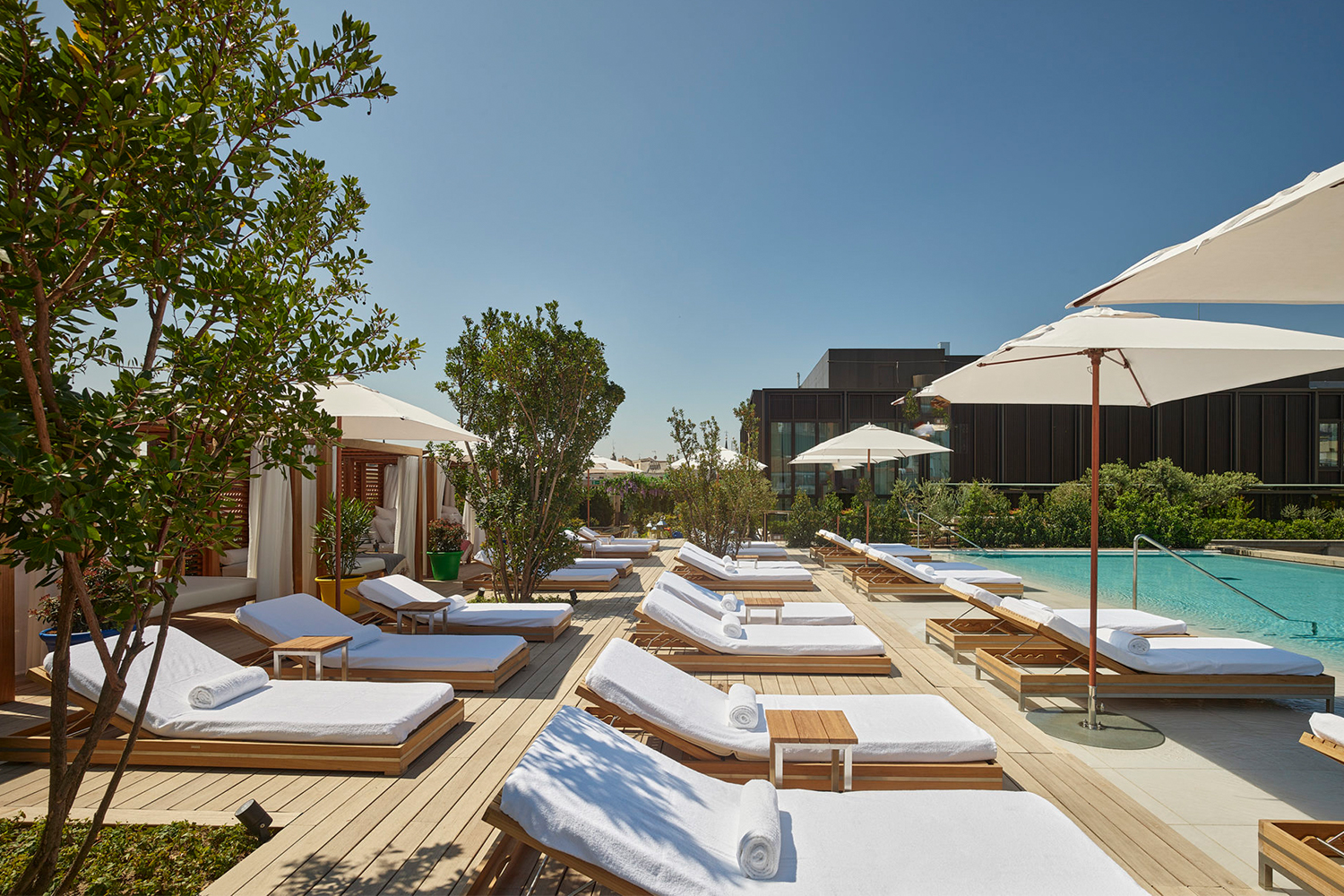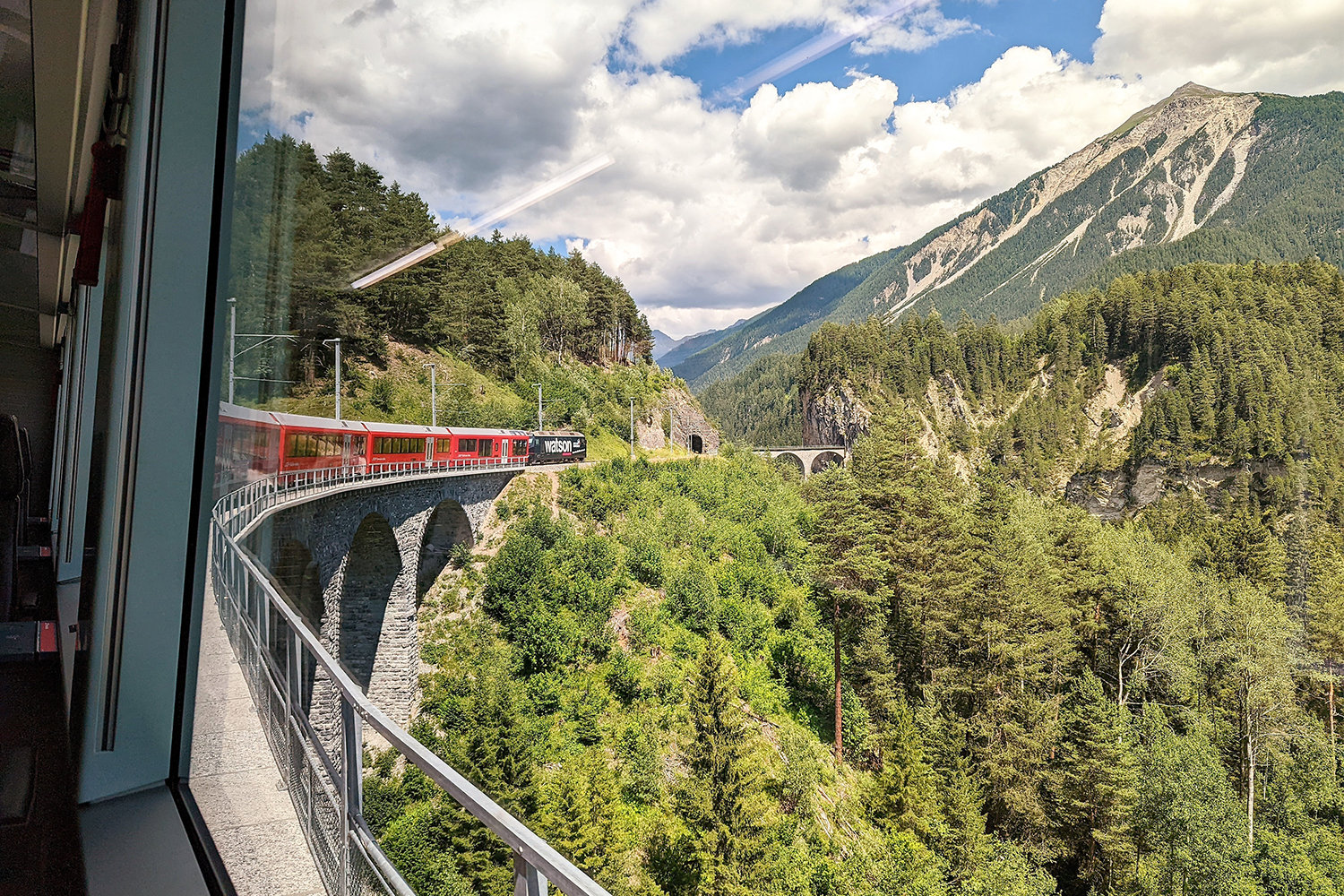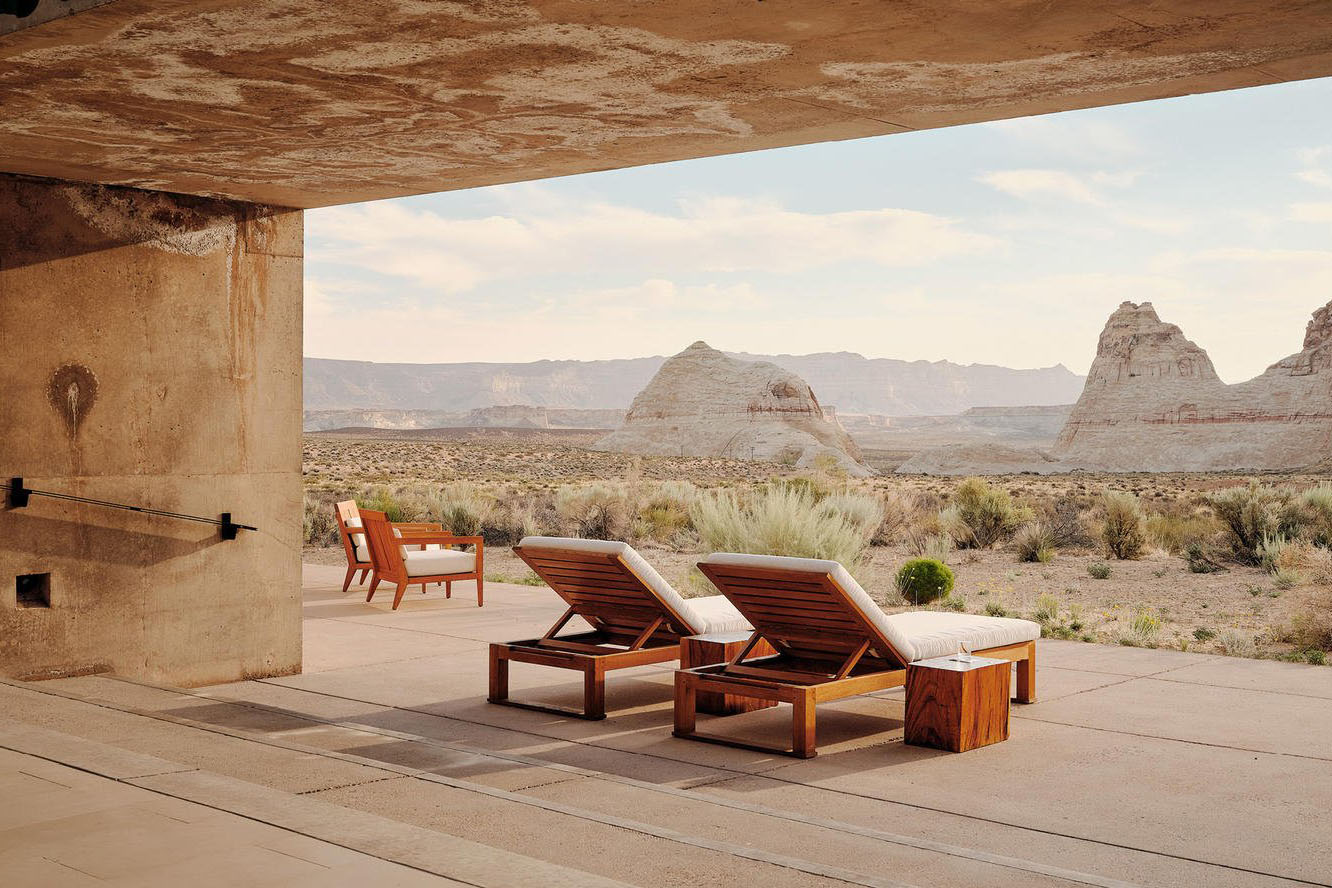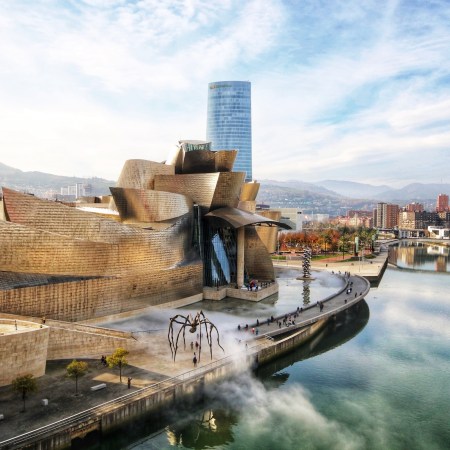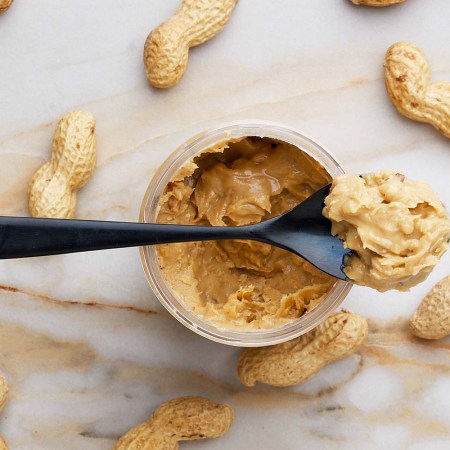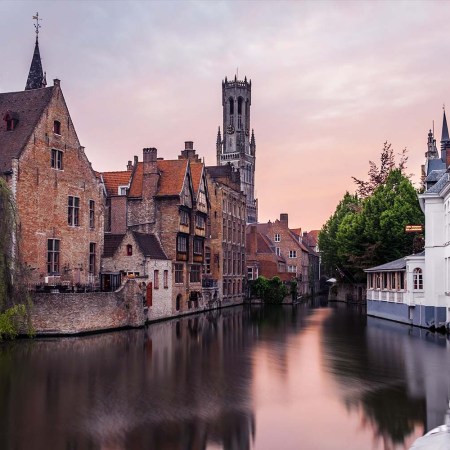It’s five in the morning as the sky’s impenetrable black mask begins lifting, revealing grays and soft blues in its stead. There are well over 100 hot-air balloons being birthed from flame all around me, rising up from the ground like the fleet of some alien invasion preparing for liftoff. Cappadocia, Turkey is the ballooning capital of the world, with the vast majority of global rides taking place here. Sunrise flights over its Red Valley — with its striated rocks and eroded cliffs and formations, it looks the part of Utah’s Bryce Canyon — have become a renowned spectacle, the multicolored teardrops filling the sky and glowing from within as their torches blast away.
There are about two dozen people standing in the basket of each balloon as it quickly ascends to an altitude of 1,000 meters, offering spectacular views as a glowing red sun fuels the vibrant start of the day. After sunrise, the balloons land around the valley, with crews docking them to truck trailers and deflating them, each one collapsing like so many melted scoops of ice cream.
The entire experience may seem like it’s a made for social media spectacle (and yes, your social feeds are probably blowing up with it), but sometimes the stereotypically popular thing happens to be pretty damn wonderful, and so you succumb to the show and deal with the selfie sticks and photo-ops to enjoy the literal and metaphorical ride.

The Classic Sites and Hospitality of Istanbul
A sunrise hot-air balloon ride in Cappadocia was but one of the activities I was eager for over the course of a two-week trip through Turkey. My time began in Istanbul, a city which demonstrates the way that different cultures and civilizations can influence one another over the course of thousands of years. It’s seen in its food, its people and its very streets and neighborhoods. It’s a city of contrasts: historical sites stretching back across empires next to billion-dollar construction projects; Europe on one side of a bridge, Asia on the other; mosques that were churches; tradition sometimes clashing and sometimes blending with modernity.
If location, location, location explains real estate value, then it’s also the explanation for Istanbul’s historical prominence. “The Bosphorus is one of the most important waterways of the world,” says Eda Sökmen, the founder of Istanbulite and my guide in the city. It’s 20 miles of water servicing some 55,000 ships per year, linking different halves of the world. It played a pivotal role for the Hittites and Romans and Ottomans, and today it’s back in the news for its potential impact in the midst of Russia’s invasion of Ukraine.
The imprints of those empires can be seen across Istanbul’s boundless collection of must-visit sites. There’s the Hagia Sophia and the Blue Mosque, and my favorite, the more serene Süleymaniye Mosque. There are palaces galore, ancient Roman cisterns, the Genoese Galata Tower and an Egyptian obelisk. There’s the inimitable chaos of the Grand Bazaar and its thousands of shops spread among dozens of labyrinthine streets. Assuredly, this is but scratching the surface.

Istanbul is more than a museum of its past, though. It’s a thriving, bustling, modern city, and its recent renaissance has at least partially been fueled by the prominence of Turkish Airlines. “Istanbul is the intersection of the spice and silk roads,” Eda reminds me, and just as the city was once a global connection hub for travelers of yore, the airline has taken up the mantle in the modern age.
The airline is recognized as the most well-known brand in Turkey. (The second most well known? Salt Bae, of course. Three separate people reminded me that he’s a Turk. The guy is everywhere.) Turkish AIrlines connects to more than 120 other countries, bringing tens of millions of passengers to and through the sparkling new Istanbul Airport, which opened in 2019 and is already among the world’s busiest.
In fact, the airline reports that 85% of American travelers flying through Istanbul don’t visit the country. If that’s you, you’re literally missing out on a free chance to do so. Thanks to their stopover offer, if you’re flying business class you’re eligible to receive two complimentary nights in a five-star hotel in Istanbul; and for economy bookings, you’ll receive one free night in a four-star hotel. Snap your fingers and you have a free stay in the city before heading on your way.
While I was in town, I stayed at Raffles Istanbul and quickly found that this type of luxury hotel in this type of setting can offer staggering levels of hospitality. I had a welcome cocktail waiting for me in my room when I checked in, which is nice if not too unusual in this day and age. But this one had a twist: a customized, screen-printed photo of me they grabbed from my Instagram profile as the bottle’s label.
When I called down for a quick room-service bite, I was welcomed with this greeting: “Mr. Emen, we heard you like whiskey. Do you want to try some?” My reputation precedes me, apparently, but I said I also have an interest in Turkish raki and wonder if they have any I can try instead. So they sent up a sample flight along with an array of traditional accompanying snacks. Sometimes it’s the small details, and other times it’s the exceptional care and foresight of a dedicated service team you’ll only find at a truly high-end hotel.

Exploring Beyond: Fine Dining, Vineyards and Cave Hotels
Istanbul is hectic and your days will be filled with full-day tours. Consider escaping the chaos of the city then with an overnight at Casa Lavanda, a 15-room boutique hotel set on 21 lush acres. It’s about an hour’s drive out of the city in the Anatolian side of the country, and you’ll know your close when real traffic jams are replaced with cows blocking your path by sleeping in the middle of the road.
The property was once the countryside home of the family who runs the hotel, with the parents overseeing matters as one brother handles the business, and another mans the kitchen and garden. It’s become an in-demand destination where locals might go to get away from it all on the weekend, with great food and wine, a bucolic setting and a relaxed, wellness-oriented vibe. Tasting menu dinners have earned accolades as one of the Istanbul region’s hidden fine-dining gems, while the wine cellar is highly touted for its hundreds of labels, with a focus on Turkish bottles.
You did know there’s a ton of wine in Turkey, right? While visiting the scenic Karnas Vineyards, an exasperated staffer tells me her canned response when a tourist is surprised at seeing the prevalence of the beverage. “You’re in Turkey, not Saudi Arabia!” Indeed, and it may be a Muslim country, but it also has 7,000 years of wine production under its belt.

In Cappadocia, meanwhile, you’ll likely find yourself staying in a cave hotel, of which there are several hundred in the region. I posted up in the Kayakapi Premium Caves, which boasts a hilltop location in the town of Ürgüp. Ancient cave dwellings have been retrofitted with all the modern creature comforts, while the property has an outdoor pool, several restaurants, and a full hamam and spa.
Alternately, the central part of the touristic region, Göreme, is where to stay if you want to look up at those hot air balloons from your hotel during breakfast. The surroundings are a bit more packed, but you’ll be in on the influencing action from the ground up.

Relaxing and Raging in Bodrum
To really find some R&R in Turkey — or, alternatively, to turn up the volume with a raging summertime party scene — head to the coastal retreat of Bodrum, which refers to the town as well as its entire surrounding peninsula. Imagine if you gave Santorini a whole peninsula to play with, as opposed to a sliver of an island, and told the folks who built it up to have at it, go as big as you want. The destination is stacked with five-star resorts boasting white-washed villas, eight and nine-figure yachts filling up the bays, and a see-and-be-seen crowd of revelers.
The town is actually the site of one of the seven ancient wonders of the world, the Tomb of Mausolus, also known as the Mausoleum at Halicarnassus and the namesake for mausoleums themselves. Only traces of the structure remain after an earthquake caused its collapse, with its stones being used to construct the medieval Bodrum Castle.
Now, Bodrum has morphed into one of the hottest European beach destinations this side of the Aegean. It’s located on the opposite side of the sea from Greece, right next to the Greek isles, so those Santorini comparisons are apt, though you’ll find that Bodrum defies definition. It’s very much a playground for the Russian and Gulf elite; it’s Turkey spliced with Dubai and Dubrovnik, with a dash of Ibiza sprinkled in for good measure. It’s where Moscow meets marhaba, with a swath of swanky, super luxe hotels lining the peninsula’s many bays.

Consider the Saturday scene at Folie, the beach club at the METT Hotel. An afternoon cabaret begins with a live saxophonist and violinist playing tropical house music alongside a singing hostess who’s leading her flock of half a dozen dancers in elaborate, though scant, feathery outfits. It’s the middle of a hot afternoon, the sun is shining and the crowds who have been tanning themselves in cabanas after docking their yachts in the lagoon are clapping and taking videos of the spectacle on their phones. Dancers climb atop the bar as the routines get sultrier as the day goes on. “The best views in Bodrum,” a guy next to me says, a phrase repeated by his buddy in concurrence, as the women in their group laugh and laugh, mezcal margaritas in hand.
The METT opened in 2021 and that weekend scene encapsulates its offerings. It’s experiential and party-forward, benefitting from its central location and private sandy beach. It’s the type of place where EDM is playing in your room when you check in, with a Spotify playlist you can follow to bring the vibes home; where condoms are among the minibar offerings; and where every (strikingly attractive) employee is seemingly as eager to make the most of Bodrum’s summer season as the guests are.
The Susona Bodrum is another new offering, taking over a former Nikki Beach resort. It’s part of Hilton’s LXR brand of hotels, with accommodations including suites and private villas with plunge pools. As opposed to an actual beach, the Susona has the more common-to-Bodrum overwater jetties lined with daybeds and lounge chairs.
When seen from above or across the waters, the hotel has the look of a temple’s grounds or commune, a circular resort complex culminating with a central hilltop where an infinity pool, bar and two restaurants can be found. The Susona is also home to the Frankie Beach Club, which brings in DJs and turns into a sceney weekend party in its own right.
You can go ahead and add all of this to the wine as a side of Turkey you likely didn’t expect.

A Guide to Turkish Eats, From Kahvalti to Coastal
Have you seen the meme about England spending centuries creating a global empire hunting for the world’s most exotic spices only to decide not to use any of them in its cuisine? Turkish food is basically at the opposite end of the spectrum. The food — oh the food — brings together intersecting cultural influences and flavors from across Europe, Asia, the Middle East and Africa, and they all come thrillingly to life in Turkish cuisine.
A proper Turkish breakfast is a can’t-miss affair. Start with a dozen spreads — from fresh tahini to a slab of honeycomb, grape molasses to spicy acuka, fruit jams and of course plenty of kaymak, or clotted cream — and tack on a few platefuls of sliced cheeses. Don’t forget pastry baskets stacked with simit, the sesame seed-studded ring breads similar to Montreal bagels. Add an order of menemen (scrambled eggs loaded with tomatoes, peppers and onions) or eggs sucuk (fried eggs with thin sliced beef sausage). Allow yourself to believe the allusion of healthfulness thanks to a plate of sliced cucumbers and tomatoes. Nosh on a few olives. Wash it all down with boatloads of tea, and then move onto Turkish coffee.
Both tea and coffee are central to Turkish life. My guide in Cappadocia, Sef, explained that the Turkish word for breakfast, kahvalti, basically means the food you eat before coffee; kahve is coffee and alti means under. While coffee has longer ties to the region, tea has come on strong within the past century.
“Tea has eaten away at coffee culture,” Sef says. “Turkey drinks the most tea per capita in the world. Not China. Not India. Not England. Turkey!” Tourists might be more eager to embrace the jolt of dark Turkish coffee, but tea rules the day for the locals.

Then there’s the hearty meat-based fare of the southeast, exemplified by the tantalizing Adana kebab. It’s an exasperatingly simple dish — a mixture of ground beef and lamb, studded with fat, flavored with salt and red pepper and perhaps cumin or sumac — yet it’s loaded with flavor, and it’s one of a near-endless range of regional kebab formats. There’s lahmacun, the minced meat flatbreads you roll up and eat like a quesadilla or a slice of pizza, sprinkled with lemon juice and parsley. There’s kokoreç, every Turkish person’s favored late-night food: grilled lamb intestines stuffed with offal and sweetbreads, eaten on a skewer or stuffed into a sandwich or wrap. There are influences from Russia and Central Asia in the form of manti, meat-stuffed dumplings akin to tortellini-sized pelmeni served with yogurt sauce, and from the Middle East, with pide and hummus and countless other delights.
Don’t forget the coastal fare that comes from the shared waters and influences of Greece, with fish and dolma and mussels and meze galore, not to mention baklava. Keep in mind though that a great deal of what’s known as Greek food is shared with, or may even originate from, Turkey. “‘Yogurt’ is the only Turkish word that made it into the English language,” Eda of Istanbulite offers as an example. So why aren’t Americans flocking to buy Turkish yogurt as opposed to Greek yogurt? “The Greeks just had better marketing.”
It’s a common theme heard across Turkey, though not only for food. Turkey has a chip on its shoulder from lost opportunities and past grandeur. It’s a country which makes no money on the massive trade flowing through the Bosphorus, for instance. A country that the winning World War I powers tried to divvy up and keep for themselves because they found it so valuable. A country whose land and people have been at the forefront of civilization for thousands of years, yet is perhaps still trying to find its footing and figure out where it fits on the modern global stage.
As with any entity in need of a boost, the country is going all in on a rebrand. Hello, Türkiye! The U.N. recognized the country’s formal request this year to be known as such, changing its official spelling from “Turkey” to “Türkiye.” It’s a new era in the transcontinental, once-was and would-be world power.
Come for the hot-air balloons and the history, stay for the food and beach getaways. Use a free stopover, drink plenty of Turkish raki and wine, even knock yourself out visiting every Salt Bae restaurant in the country. Do as you like! Regardless of your expectations for the country, you’ll be in for a few surprises. And if you’re like me, you’ll know that your first visit won’t be your last, with so much more to uncover and explore.
For more travel news, tips and inspo, sign up for InsideHook's weekly travel newsletter, The Journey.

